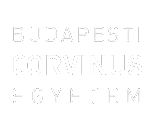Moukdavanh, Ophetsane (2022) Leadership trends in governmental and non-governmental organisations: A comparative case study in the Lao PDR. MA/MSc szakdolgozat, BCE Kommunikáció és Szociológia Intézet, Kommunikáció- és Médiatudomány Tanszék.
|
PDF
- Requires a PDF viewer such as GSview, Xpdf or Adobe Acrobat Reader
413kB |
Absztrakt (kivonat)
Each organisation has several goals to achieve by using different key elements to maximise efficiency. “Leadership” is one of the most important functions of management to help enhance productivity and achieve organisational goals (Mumby & Kuhn, 2018). Leadership styles are believed to have an impact on staff productivity. Furthermore, various organisations have different hierarchical systems, which may be confusing and sensitive at times. The thesis hopes to uncover trends of leadership within different organisations in Lao PDR with a focus on the governmental and non-governmental sector in order to highlight how a leader's personality can enhance workers’ efficiency. This is an increasingly relevant topic in Lao PDR because most research focuses on a certain field - yet, to the best of my knowledge, no comparative study has been undertaken in this field previously. In order to do so, I should evaluate organisational structure, leadership styles, and employee experiences in both governmental and non-governmental organisations. This study begins with a broad overview of Laos' organisational structure before moving on to a comparative case study to explore what factors might influence a leader's personality, why they do so, and how those factors influence leadership style in both governmental and non-governmental organisations. This research consists of primary data. I use SPSS to analyse data using a combination of quantitative and qualitative methods. In addition, I undertake to test the following two hypotheses in the empirical part of the dissertation: H1: In the case of GOs, the organisational structure has a greater influence on workers than leadership style. H2: In the case of NGOs, the leadership style has a greater influence on workers than organisational structure. Combining the findings of the quantitative survey and the qualitative interview. The research strongly supports H1and also accepts H2. The Lao PDR has a variety of leadership styles, both governmental and non-governmental, although transformational leadership has been highlighted in non-governmental organisations. A leader with this style establishes a vision and encourages subordinates to go above and beyond the scope of their responsibilities. While bureaucratic style is applied to governmental organisations, a leader tends to strictly follow the rules, which may have an impact on the workers in the sense that they may not be able to spread their opinion, including creativity and innovation, which may fail them to reach their goal in some specific field. This study also reveals cultural dimensions; it has been established that leaders from different cultures function and influence in different ways. I believe that this research work is important for organisations in the Lao PDR as a whole because it allows people to see what is similar and what is significantly different between two types of organisations so that individuals can increase awareness, and attempt to rectify or adapt in the working style so that it benefits the leader, workers, and, most importantly, the organisation.
| Tétel típus: | MA/MSc szakdolgozat |
|---|---|
| Témakör: | Vállalati vezetés és politika |
| Azonosító kód: | 15332 |
| Képzés/szak: | Communication and Media Science |
| Elhelyezés dátuma: | 27 Jan 2023 11:21 |
| Utolsó változtatás: | 27 Jan 2023 11:21 |
Csak a repozitórium munkatársainak: tétel módosító lap

